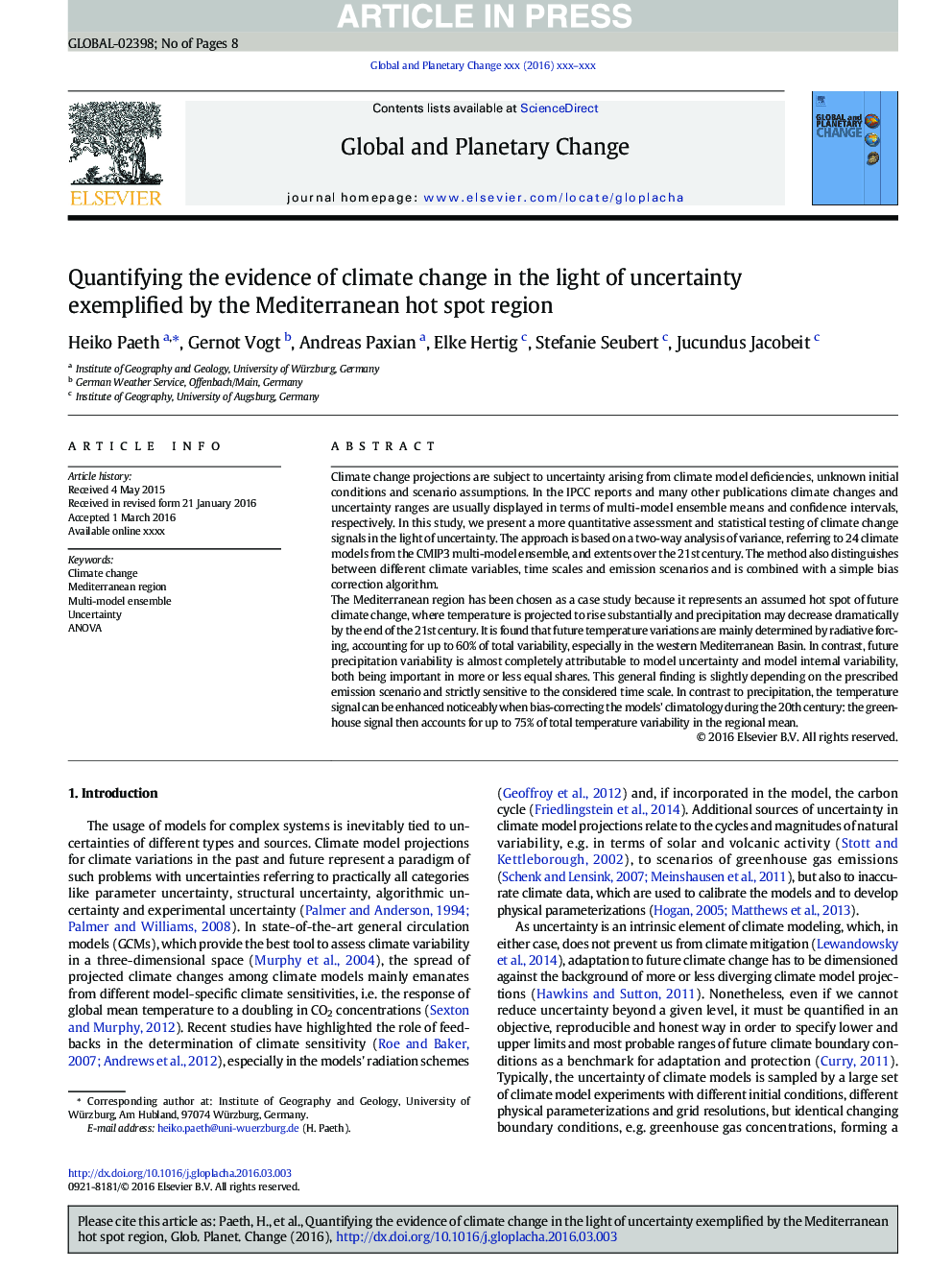| Article ID | Journal | Published Year | Pages | File Type |
|---|---|---|---|---|
| 5755396 | Global and Planetary Change | 2017 | 8 Pages |
Abstract
The Mediterranean region has been chosen as a case study because it represents an assumed hot spot of future climate change, where temperature is projected to rise substantially and precipitation may decrease dramatically by the end of the 21st century. It is found that future temperature variations are mainly determined by radiative forcing, accounting for up to 60% of total variability, especially in the western Mediterranean Basin. In contrast, future precipitation variability is almost completely attributable to model uncertainty and model internal variability, both being important in more or less equal shares. This general finding is slightly depending on the prescribed emission scenario and strictly sensitive to the considered time scale. In contrast to precipitation, the temperature signal can be enhanced noticeably when bias-correcting the models' climatology during the 20th century: the greenhouse signal then accounts for up to 75% of total temperature variability in the regional mean.
Related Topics
Physical Sciences and Engineering
Earth and Planetary Sciences
Earth-Surface Processes
Authors
Heiko Paeth, Gernot Vogt, Andreas Paxian, Elke Hertig, Stefanie Seubert, Jucundus Jacobeit,
